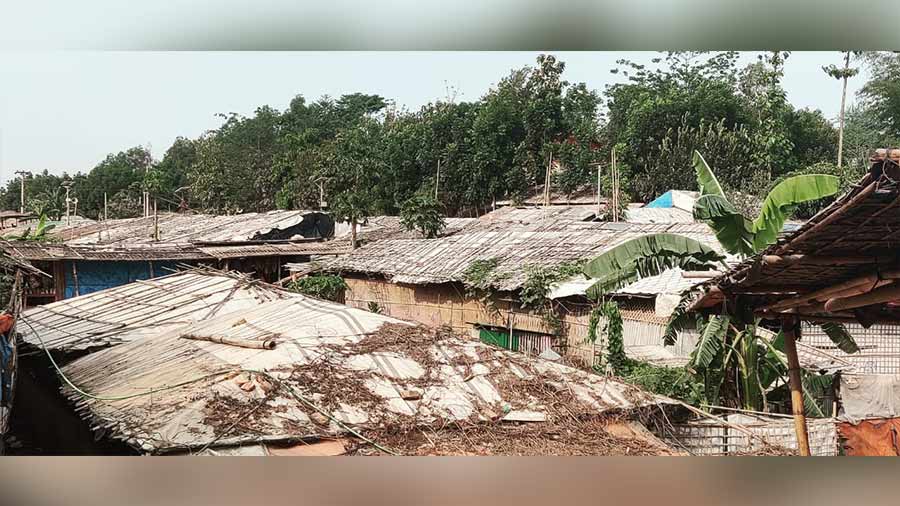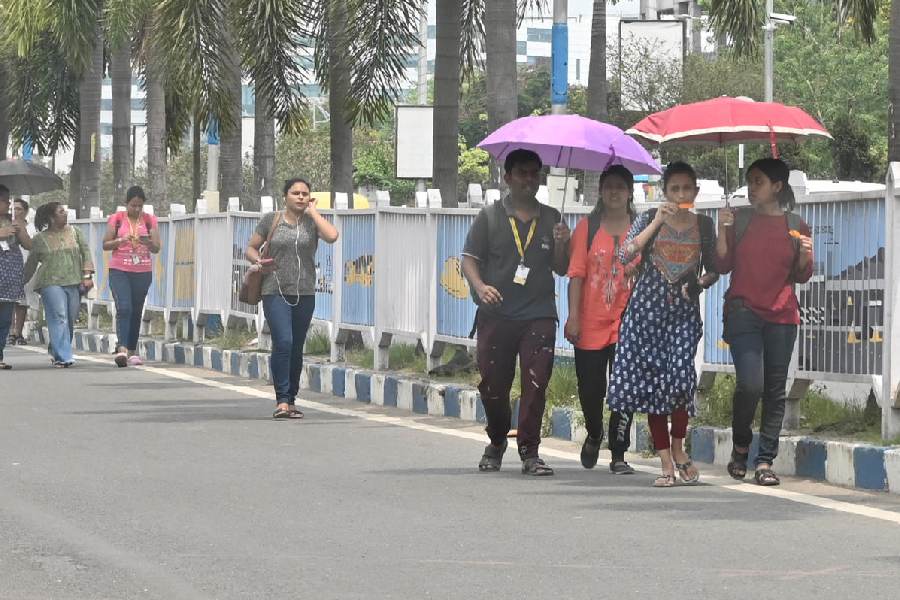According to the Indian Meteorological Department’s bulletin issued at 4.45 on Saturday, cyclone Mocha would attain maximum sustained speed between 200 and 210 km per hour with wind speed around 230 km per hour.
The landfall speed has been pegged around 170 to 180 km per hour with wind speed around 200 km per hour.
“It is very likely to move north-northeastwards and cross southeast Bangladesh and north Myanmar coasts between Cox’s Bazar (Bangladesh) and Kyaukpyu (Myanmar), close to Sittwe (Myanmar) around noon on May 14, 2023 as an extremely severe cyclonic storm with maximum sustained wind speed of 170-180 kmph gusting to 200 kmph,” read the IMD bulletin.
A senior IMD official pointed out that the system is called a super cyclone when the maximum sustained speed crosses 221 km per hour; which is barely higher than the presently predicted speed.
“At this point, we can only say that an extremely severe cyclone will be formed with a wind speed as predicted but further intensification is possible by tonight,” admitted Mrutyunjay Mohapatra, director general of IMD to The Plurals on Saturday evening.
“One cannot rule out the possibility of a super cyclone, but whether it technically crosses the super cyclone threshold or not, the devastation will be significant … whether a super cyclone or very severe cyclone; an area of about 150 km from the landfall will receive significant damage,” said an IMD official.
Raghu Murtugudde, an earth scientist and weather expert attached to Indian Institute of Technology, Mumbai and the University of Maryland, pointed out that “rapid intensification may happen as the bay is warm and cyclone is moving slowly over the ocean and gaining lot of energy; and just before hitting the land, it may reach the super cyclone category.”
Mocha defied predictions

The cyclone is changing its wind speed frequently. The IMD bulletin around noon had predicted that the maximum sustained speed of Mocha could reach up to 190 to 200 km per hour with wind speed gusting around 220 km per hour while the landfall speed was pegged around 150 to 160 km per hour with wind speed gusting at 175 km per.
A closer look at the IMD bulletins show that the cyclone has intensified quickly and has become much stronger between noon and the bulletin issue at 4.45 pm. The initial prediction was the formation of a “very severe cyclonic storm”, which was later upgraded to “extremely severe cyclonic storm”.
Incidentally in its bulletin number 3 issued at 9.15 am on May 10, the IMD had predicted a very severe cyclonic storm and predicted the landfall speed of maximum 130 km while the maximum sustained speed was calculated to be in the range of 140 to 150 km per hour. Over the period, the IMD continued to predict stronger cyclones and modified the maximum sustained speed by around five times and the speed at landfall by four times.
Clearly the intensification has occurred over the last three days far too rapidly compared to the predictions; and the speed, both during the path and landfall, increased around 40 per cent compared to the initial prediction of 150 to 210 km per hour in maximum wind speed gusting while on course and 130 to 200 km per hour at landfall.
“It’s a dynamic system and we keep on upgrading as it happens. You cannot predict these things 100 per cent, but we continue to upgrade the prediction early enough so that the damages can be minimised” explained Mohapatra.
Cyclone zeroing in on Rohingya refugee camps

Hundreds and thousands of Rohingyas at refugee camps are set to be affected by cyclone Mocha
More than a million Rohingya refugees are staring at the path of the “Super Cyclone” Mocha, which is all set to make a landfall around noon on May 14, 2023.
Mocha is predicted to land at Sittwe in Myanmar, and pass right through the refugee camps housing the hapless community on the Bangladesh-Myanmar border. Incidentally, Sittwe is less than 100 km from Tecnaf in Bangladesh, a border town separated by Naf river with Myanmar, housing 260,000 refugees.
“The cyclone is set to hit near Sittwe as per our latest projection but it’s a dynamic system and we are keeping a close watch. Usually, more damage is caused on the right side of the landfall point and that means Myanmar is likely to be more affected,” Mohapatra told The Plurals.
On May 12, the World Meteorological Organization (WMO) said cyclone Mocha’s landfall may occur “with maximum sustained wind speed around 180 to 190 km per hour, the equivalent of category 3 on the Saffir Simpson scale” and “a storm surge of about 2.0-2.5 m above the astronomical tides is likely to inundate low-lying areas of north Myanmar and the adjoining southeast Bangladesh coasts”.
WMO’s Clare Nullis said at a press briefing in Geneva, “There will be a major impact both before and after the landfall for potentially hundreds of thousands of the world’s most vulnerable people” reminding that “Cox’s Bazar is home to nearly one million Rohingya refugees — the world’s largest camp.”
“Heavy rainfall has been predicted with the possible risk of floods, flash floods and landslides and there will be major impact both ahead and after the landfall for potentially hundreds of thousands of the world’s most vulnerable people,” added WMO.
Several international agencies are making contingency plans and mobilising community preparedness, based on the forecasts, but that seems inadequate.
“Still most people in the area do not know that a disaster of such a magnitude is likely to hit them soon, forget about the preparation,” Muhammad Shobbir, a Rohingya migrant staying in Balukhali camp near Cox’s Bazar, told this reporter recently. Balukhali camp has more than 5,00,000 resident refugees. Most Rohingyas live in makeshift shanties made of tarpaulin, bamboo, polythene under appalling conditions; which are likely to just blow away at the face of such a severe cyclone.
The migrant worker said the government and NGOs have set up about 400 shelters but the number is grossly inadequate.

